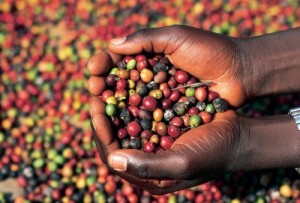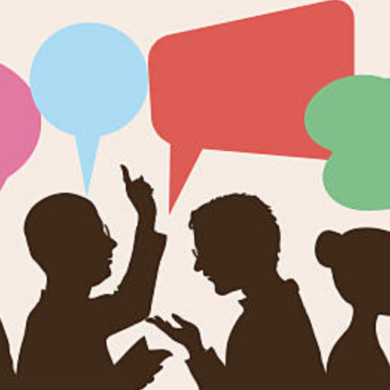CHELSEA CHANG | BLOGGER | SQ ONLINE 2014-15
“Caffeine” is a word synonymous with modern life. Whether you are a college student, a new parent, a barista, a nine-to-five office worker, heck, even a tween (a person between 10 and 12 years old), you are likely to be drawn to a lifestyle that promises perpetual energy, productivity, and aromatic/savory pleasure with the aid of one magical sustenance: coffee.
Did you know that millions of people are paying more for 12 ounces of chain-store cappuccinos than they are for a gallon of gasoline (according to the Consumerist)? What makes coffee so enchanting, and what makes it the second-most-traded global commodity after crude oil and derivatives¹? Some argue that coffee is the world’s most popular psychoactive drug². What kind of chemistry goes on inside a coffee seed (that’s right! Coffee comes from seeds rather than beans, a common misunderstanding) that seems to get people addicted, like drugs? Well, my friend, if you are even remotely a coffee drinker, let us make today’s mission to understand the physiological impacts that coffee has on most of our bodies that can potentially dominate our intellectual and social lives (if it hasn’t already).
Fortunately, scientists have been studying coffee for quite a while, even if there are still tons of stuff we don’t fully understand. UC Davis, a university famous for its winemaking and beer brewing programs, has recently begun offering coffee research courses such as “The Design of Coffee” in the chemical engineering department. Fascinating, right? There are many other institutions dedicating research to further humankind’s understanding of coffee and its chemical, physiological, economic, and cultural impacts. Today, we’ll focus on the biochemistry aspect and ask three very simple questions that will (hopefully) help you understand your own love for coffee.
1. What exactly is coffee?
According to the National Coffee Association, coffee has its roots in a genus of plants known as Coffea, in which there are anywhere from 25 to 100 species of coffee plants. In our commercial coffee industry, two coffee species are most important – arabica and robusta. They differ chiefly in taste, growing conditions, and price. Arabica beans tend to taste softer and sweeter with fruity tones and have the signature acidity that characterizes excellent coffee. Robusta, on the other hand, contains twice as much caffeine as arabic beans. They taste stronger and harsher, and are generally considered inferior to arabic, but some are of high value in espressos for their deep flavor and good crema (the layer of foam at the top of a cup of espresso). The coffee beverage is made by roasting these beans through a process called pyrolysis (simultaneous changing of chemical composition and physical phase), which produces the iconic flavors of coffee by making green coffee beans change in taste.
 2. What about caffeine? Why do we really drink coffee?
2. What about caffeine? Why do we really drink coffee?
Formally known as trimethylxanthine, caffeine has a chemical formula of C8H10N4O2 and is a nitrogenous organic compound that has marked physiological effects. It’s often present in tea, coffee, guarana, maté, kola nuts, and cacao. Caffeine has stimulating effects on the central nervous system, heart, blood vessels, and kidneys. It is known to decrease fatigue and increase alertness. However, caffeine intake may also produce in people negative effects such as irritability, jitteriness, headaches, and insomnia. Decaffeinated coffee has hence been produced to reduce both the positive and negative effects so that people can enjoy these beverages for pleasure without side effects.
3. How does caffeine make you feel alive (And in some instances, undesirably so)?
Basically, caffeine tricks your brain into thinking that you’re not tired. The structure of caffeine is similar to that of our bodies’ natural molecule, adenosine, which binds to receptors in the brain to make you feel sleepy. Caffeine blocks these receptors before adenosine can calm the nerve cells. Caffeine, in turn, stimulates the nerve cells, making your brain crave more caffeine as your consumption increases. I attached this really cool video, Caffeine!, by SciShow for further explanation. It will further explain the biological phenomena that occur when you consume your favorite morning cappuccinos. Enjoy!
http://https://www.youtube.com/watch?v=Xl1XBJLfIDU
Finally, if you are interested in more information, I personally love to browse The Specialty Coffee Chronicle published by the Speciality Coffee Association of America, an online publication where you can learn immense information about all kinds of coffee-related topics.
References:
- http://www.investorguide.com/article/11836/what-are-the-most-commonly-traded-commodities-igu/
- http://www.health.harvard.edu/staying-healthy/what-is-it-about-coffee
- http://www.ncausa.org/i4a/pages/index.cfm?pageid=67
- http://www.thekitchn.com/coffee-basics-the-difference-b-41949
- http://www.britannica.com/EBchecked/topic/88304/caffeine
Images:
- http://satravelblog.com/wp-content/uploads/2014/11/for-the-love-of-coffee.jpg
- http://img.21food.com/20110609/product/1305729788546.jpg
- http://www.8ball.co.uk/media/catalog/product/cache/1/image/217x/9df78eab33525d08d6e5fb8d27136e95/F/u/FunnyScienceNerdGeekWomensTShirt_CaffeineMoleculeStarbucks_White_CU.jpg
- http://p-fst2.pixstatic.com/5069e7d174c5b64afe000771._w.540_h.162_s.fit_.jpg




